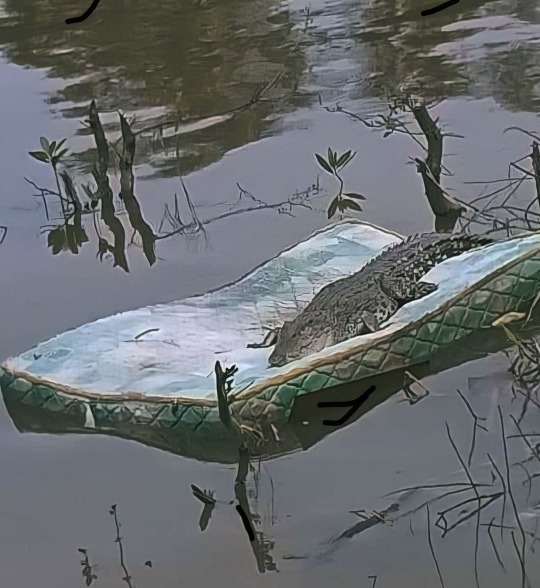#alligator
Text

Berry patient.
194 notes
·
View notes
Text

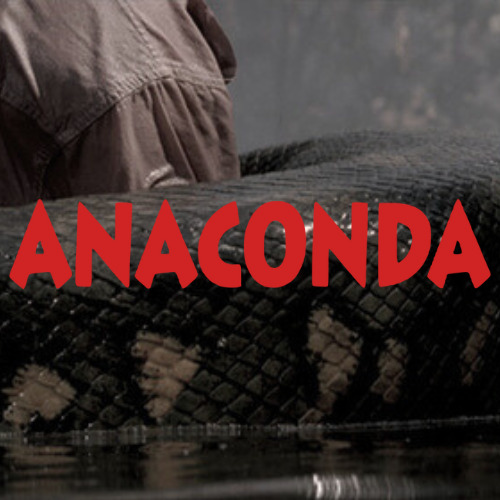

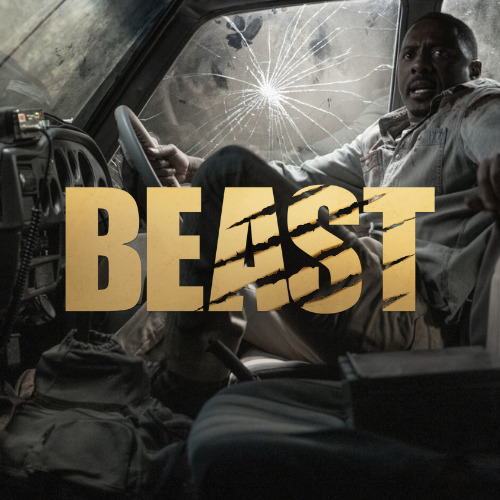
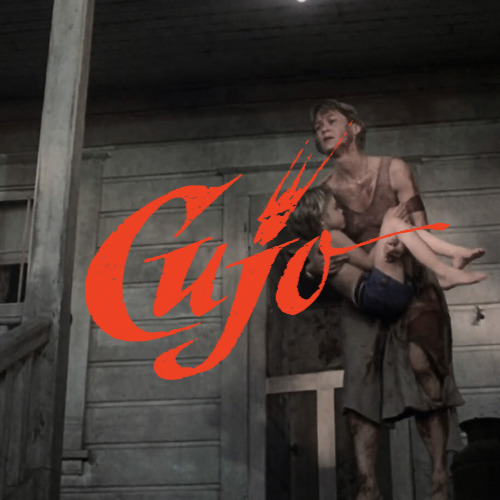
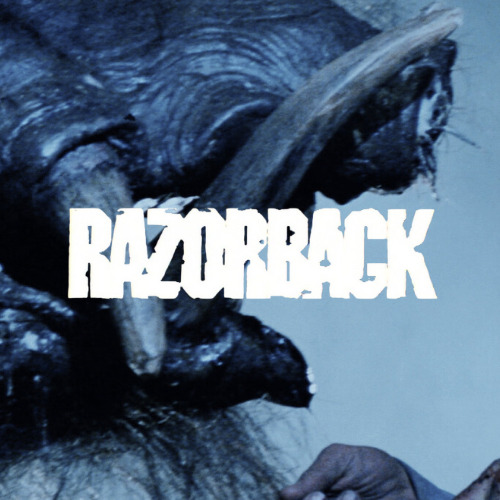


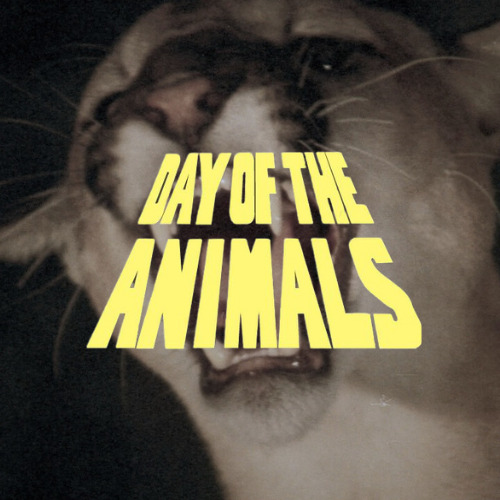
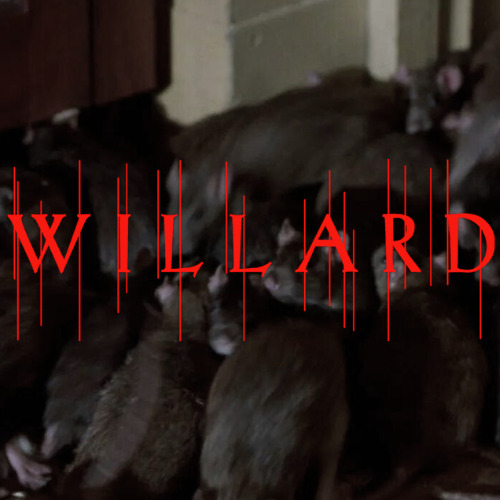


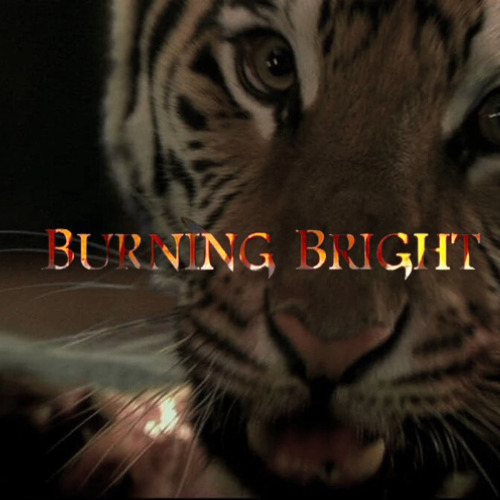
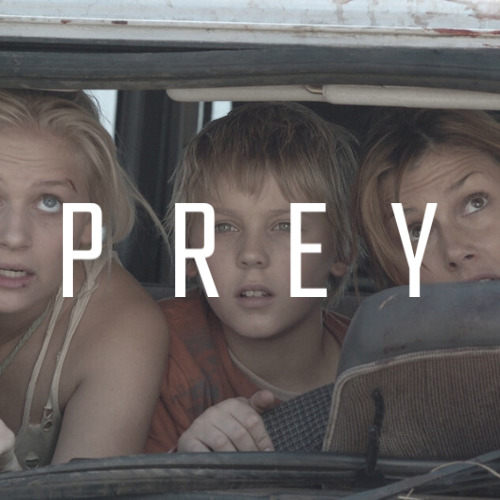
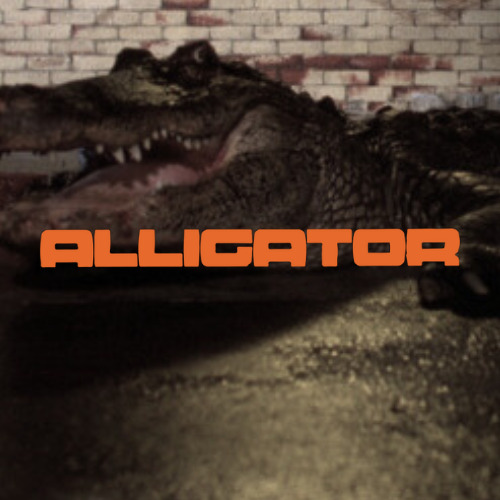
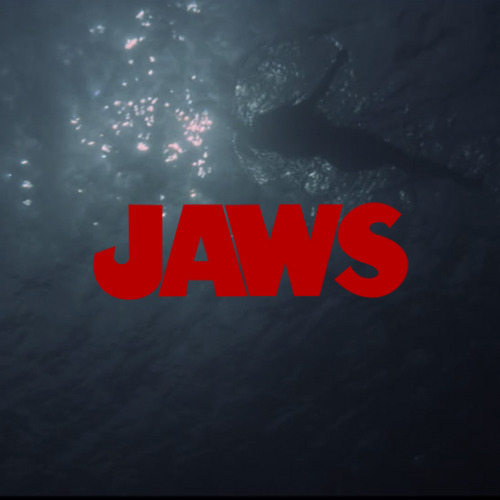
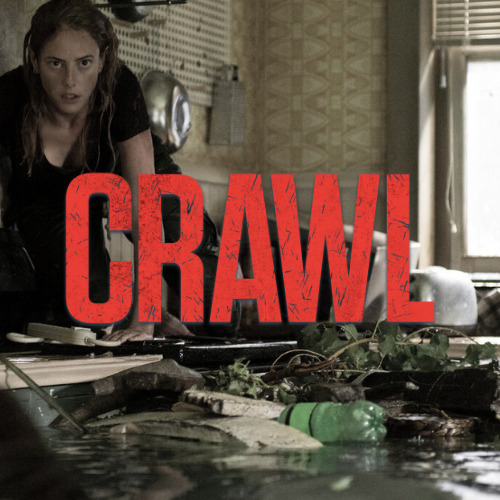

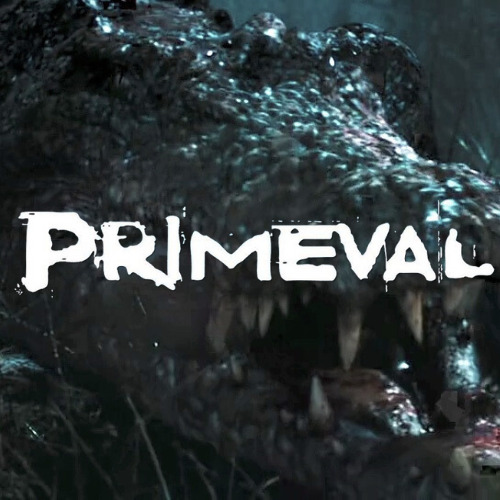

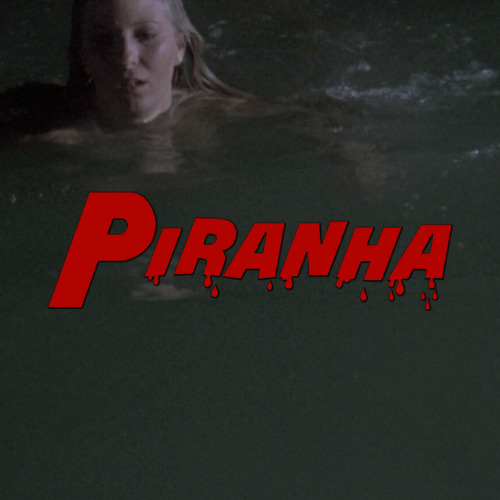
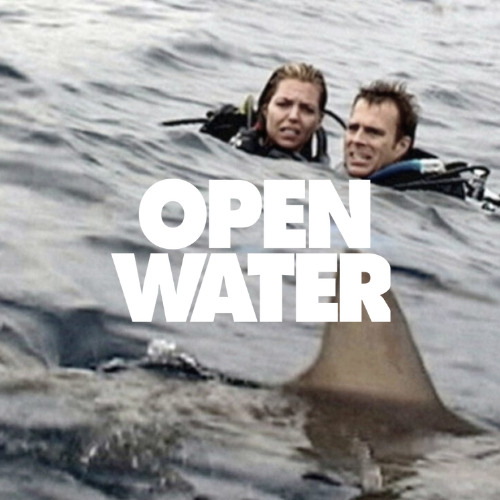

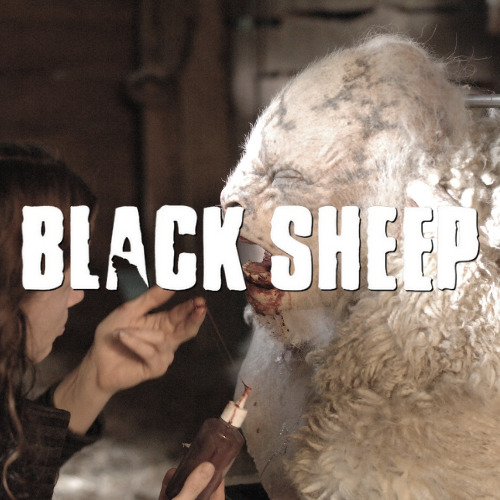

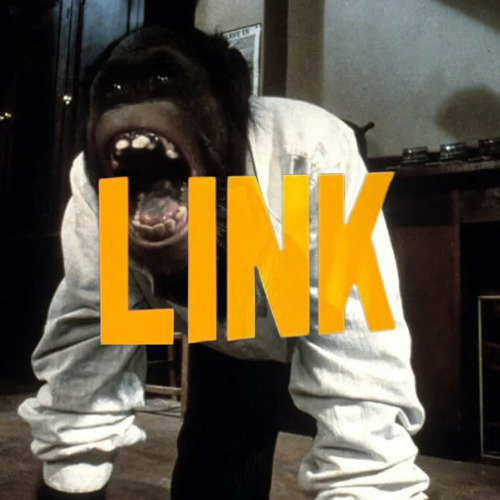

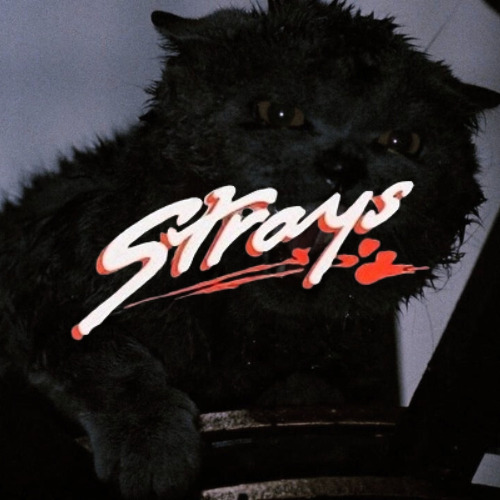
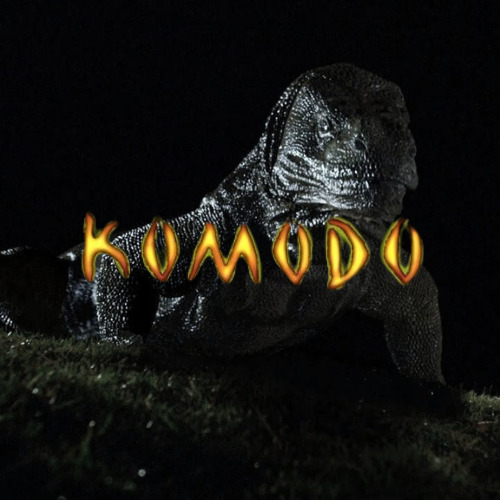
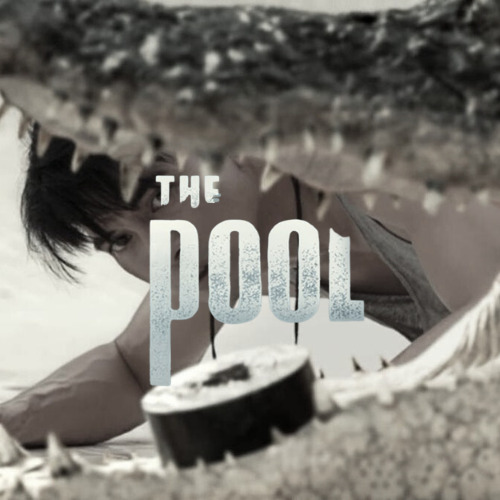
horror sub-genres: animal
#horror#horror movies#horroredit#moviesedit#horror sub-genres#filmedit#cinema#horror cinema#horror aesthetic#grizzly#anaconda#cocaine bear#beast#cujo#razorback#the birds#backcountry#day of the animals#willard#prophecy#king kong#burning bright#prey#alligator#jaws#crawl#lake placid#primeval#47 meters down#piranha
174 notes
·
View notes
Text
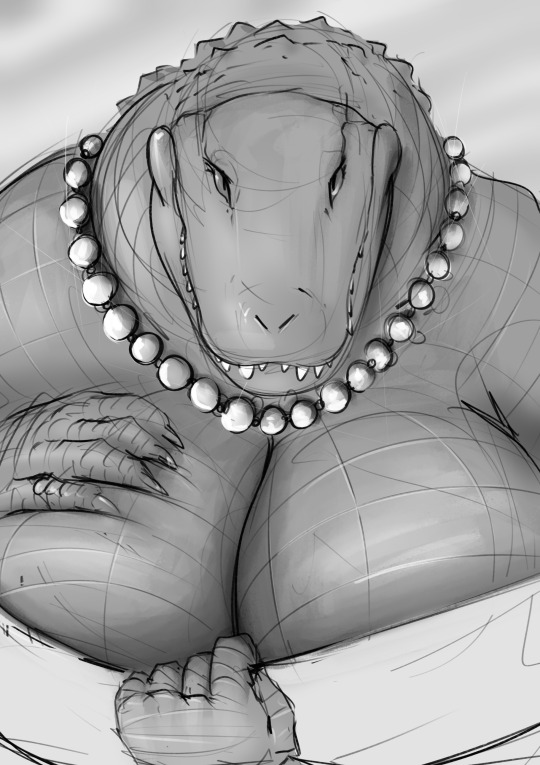
Olivia sketch from a while ago, lil alt under the cut

160 notes
·
View notes
Text
120 notes
·
View notes
Text

Clyde Butcher
#landscape#nature#landscape photography#nature photography#dark nature#swamp#black and white photography#alligator#dark aesthetic#southern gothic#regional gothic#lensblr#curators on tumblr
16 notes
·
View notes
Text
Alligator Body Language and You, or: How To Know When An Alligator On Social Media is Being Stressed for Views
Alligators are wild animals. Despite the idiotic claims of animal abusers like Jay Brewer, they cannot be domesticated, which means they are always going to react on the same natural instincts they've had for millions of years. Habituated, yes. Tamed, yes. Trained, definitely. Crocodilians can form bonds with people- they're social and quite intelligent. They can solve problems, use tools, and they're actually quite playful. Alligators are also really good at communicating how they're feeling, but to somebody who doesn't spend much time around them, their body language can be a bit mystifying. And it doesn't help when social media influencers are saying shit like this:

That is not what a happy gator looks like.
That's a terrified, furious gator who isn't attacking because the ogre handling her has her in a chokehold. She's doing everything she can to express her displeasure, and he's lying about it because he knows his audience doesn't even know how to think critically about what he's doing. He knows that because his audience doesn't know anything about these animals, he can get away with it. This I think is why I hate him so much- he deliberately miseducates his audience. He knows what he's doing is factually inaccurate, he just doesn't care because attention means more to him than anything else in the world.
Let's change that! Here are two really important lessons for understanding alligator body language on social media.
Lesson 1: Alligators Don't Smile (in fact, most animals don't)
So what's going on in this video? Jay Brewer is aggressively choking his white alligator Coconut while scrubbing algae off of her with a toothbrush. And make no mistake, he is digging into the creature's throat while she is visibly distressed. He claims she's happy- but she's not. He is willfully misrepresenting what this animal is feeling. That's a problem, because people... well, we actually kind of suck at reading other species' body language. The reason for this is that we tend to overlay our own responses on their physical cues, and that's a problem. For example, let's look at an animal with a really similar face to ours, the chimpanzee. Check out Ama's toothy grin!
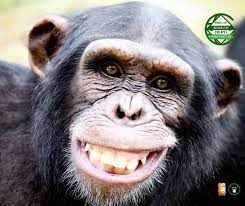
Wait, no. That's not a happy smile. That's a threat display. When a chimpanzee "smiles," it's either terrified and doing a fear grimace, or it's showing you its teeth because it intends on using them in your face.
How about a dog? Look at my smiling, happy puppy!

Oh wait no, this is a picture of Ryder when he was super overwhelmed by noise and people during a holiday party. He'd hopped up in my sister's lap to get away from stuff that was happening on the floor and was panting quite heavily. See the tension in the corners of his mouth and his eyes? A lot of the time when a dog "smiles," the smile isn't happy. It's stress! Why Animals Do The Thing has a nice writeup about that, but the point is, our body language is not the same as other species. And for reptiles, body language is wildly different.
For instance, look at these two alligators. Pretty cute, right? Look at 'em, they're posing for a Christmas card or something! How do you think they're feeling?

Well, I'll tell you how the normal one is feeling. He's annoyed! Why is he annoyed? Because the albino just rolled up, pushed another gator off the platform, and is trying to push this guy, too. I know this because I actually saw it happen. It was pretty funny, not gonna lie. He's not gaping all the way, but he was hissing- you can actually see him getting annoyed in the sequence I took right before this shot. Look at him in this first shot here- he's just relaxing, and you can see he isn't gaping even a little bit.


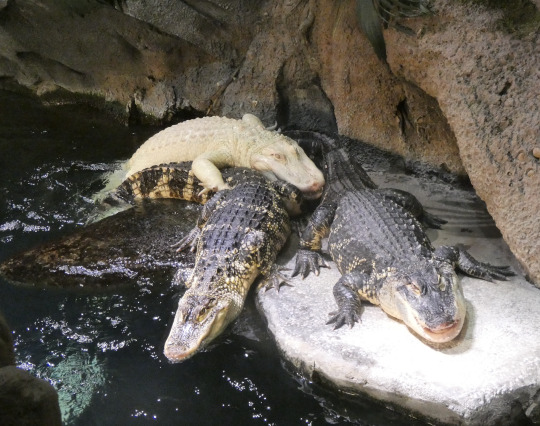
By the end, he's expressing displeasure, but not enough to actually do anything about it. He's annoyed, but he's comfy and that's where one of the best basking areas is, so he'll put up with it.
Reptiles open their mouths wide for a lot of reasons, but never because they are actively enjoying a sensation. Unless they're eating. No reptile smiles- they can't. They don't even have moveable lips. If a reptile is gaping, it's doing so because:
It is doing a threat display.
It is making certain vocalizations, all of which are threats. Alligators are one of the rare reptiles that do regularly vocalize, but most of their calls aren't made with a wide open mouth.
It is about to bite something delicious or somebody stupid. Check out this video- virtually all of the gaping here is anticipatory because these trained gators know darn well that the bowl is full of delicious snacks. (I have some issues with Florida's Wildest, but the man knows how to train a gator AND he is honest about explaining what they're doing and why, and all of his animals are healthy and well-cared for, and he doesn't put the public or his staff at risk- just himself.)
youtube
It's too hot and it has opened its mouth to vent some of that heat and thermoregulate. This is the main reason why alligators will often have their mouths part of the way open, but sometimes they'll open all the way for thermoregulation. This is what a thermoregulatory gape looks like- usually it's not all the way open, kinda more like < rather than V, but you can't say that 100% of the time. Additionally, a thermoregulatory gape... typically happens when it's hot out. If they're inside, maybe they've been under their basking light for too long. Heat's the dominant factor, is what I'm getting at.
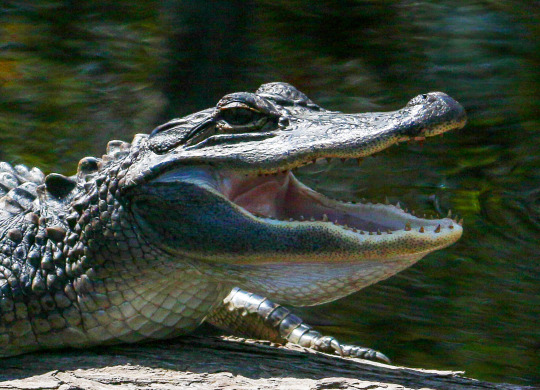
There is another reason that a captive crocodilian might be gaping, and that's because it's doing so on command. Some places have their gators trained to gape on cue, like St. Augustine Alligator Farm and other good zoos. They have the animals do this in presentations that are genuinely educational. They ask the animals to open their mouths so that they can show off their teeth and demonstrate how their tongues seal off the back of their mouth. They'll also do it as part of routine healthcare, because looking at their teeth is important.
In this case, the animals aren't gaping because they're stressed, they're gaping because they know they're gonna get a piece of chicken or fish if they do it. And what's more, they're doing it on cue. They have a specific command or signal that tells them to open wide. It's not an instinctive response to a situation. It's trained. If the animal provides the behavior after a cue, the situation is much less likely to be negatively impactful.
It's also important to remember that there's a difference between a partially open mouth and a gape! As discussed above, alligators will often have their mouths a little bit open just to maintain temperature homeostasis. It helps them stay comfy, temperature-wise. These guys are all doing thermoregulatory open-mouthed behavior- that slight open and relaxed body posture is a dead giveaway. (That and it's the hottest spot in the enclosure.)
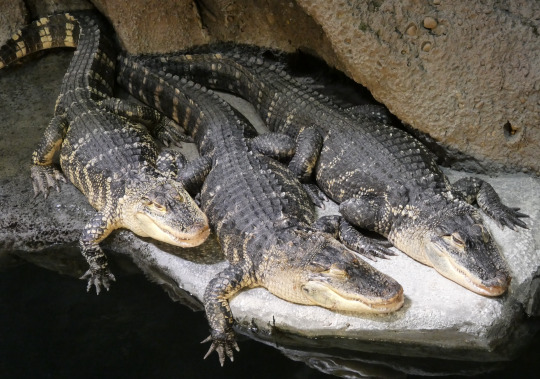
Lesson 2: A Happy Gator Is A Chill Gator
So if alligators don't smile or have facial expressions other than the :V that typically signifies distress, how else can you tell how they're feeling? One way is stillness. See, alligators subscribe to the philosophy of if it sucks... hit da bricks.

Basically, if they hate it, they'll leave. Unless, y'know, somebody has their meaty claws digging into their throat or is otherwise restraining them. (Restraint isn't always bad, btw. Sometimes the animal is going through a medical thing or needs to be restrained for their safety- which a responsible educator will explain.)
Let's look at a very similar scenario, in which a captive alligator is getting his back scrubbed.
As you can see, it's quite different. First, he's not being restrained at all. Second, look at how relaxed he is! He's just chilling there vibing! He could simply get up and leave if he wanted to, because he's not being held. Towards the end of the video, as he lifts his head, you can see that his respiratory rate is very even as his throat flutters a bit. I'm not sure what this facility is, so I can't comment on care/general ethics, but like. In this specific case, this is an alligator enjoying being scrubbed! And you can tell because he's not doing anything. A happy gator is content to be doing what they're doing.
Why Should I Listen To You?
Now, you should ask yourself, why should you listen to me? Why should you trust me, who does not own an alligator, versus Jay Brewer, who owns several?
Well, first off, there's no profit for me in telling you that what you're seeing on social media is in fact not what you're being told you're seeing. I'm not getting paid to do this. That's the thing with people who make social media content. The big names aren't doing it just for fun. They're doing it for money. Whether that's profit through partnerships or sponsorships, or getting more people to visit their facilities, or ad revenue, you can't ignore the factor of money. And this is NOT a bad thing, because it allows educators to do what they're passionate about! People deserve to be paid for the work that they do!
But the problem starts when you chase the algorithm instead of actually educating. A "smiling" alligator gets the views, and if people don't know enough to know better, it keeps getting the views. People love unconventional animal stories and they want those animals to be happy- but the inability to even know where to start with critically evaluating these posts really hinders the ability to spread real information. Like, this post will probably get a couple hundred notes, but that video of Coconut being scrubbed had almost 400,000 likes when I took that screenshot. Think about how many eyeballs that's reached by now. What I'm saying here is that it's just... really important to think critically about who you're getting your information from. What do dissenters say in the comments? What do other professionals say? You won't find a single herpetologist that has anything good to say about Prehistoric Pets, I can tell you that right now.
Another reason you can trust me is that my sources are not "just trust me bro," or "years of experience pretending my pet shop where animals come to die is a real zoo." Instead, here are my primary sources for my information on alligator behavior:
Dragon Songs: Love and Adventure among Crocodiles, Alligators, and Other Dinosaur Relations- Vladimir Dinets
The Secret Social Lives of Reptiles- J. Sean Doody, Vladimir Dinets, Gordon M. Burghardt
Social Behavior Deficiencies in Captive American Alligators (Alligator mississippiensis)- Z Walsh, H Olson, M Clendening, A Rycyk
Social Displays of the American Alligator (Alligator mississippiensis)- Kent Vliet
Social Signals and Behaviors of Adult Alligators and Crocodiles- Leslie Garrick, Jeffery Lang
Never smile at a crocodile: Gaping behaviour in the Nile crocodile at Ndumo Game Reserve, South Africa- Cormac Price, Mohamed Ezat, Céline Hanzen, Colleen Downs (this one's Nile crocs, not American alligators, but it's really useful for modeling an understanding of gape behaviors and proximity)
Thermoregulatory Behavior of Captive American Alligators (Alligator mississippiensis)- Cheryl S. Asa, Gary D. London, Ronald R. Goellner, Norman Haskell, Glenn Roberts, Crispen Wilson
Unprovoked Mouth Gaping Behavior in Extant Crocodylia- Noah J. Carl, Heather A. Stewart, Jenny S. Paul
Thank you for reading! Here's a very happy wild alligator from Sanibel for your trouble.

32K notes
·
View notes
Text
bro biffed it
37K notes
·
View notes
Text

A young American alligator (Alligator mississippiensis) rides on the back of its mother in Brazos Bend State Park, Texas, USA
by Rick Dunlap
#american alligator#alligators#crocodilians#reptiles#alligator mississippiensis#alligator#alligatoridae#crocodilia#reptilia#chordata#wildlife: texas#wildlife: usa#wildlife: north america
24K notes
·
View notes
Text
Specify in the tags please what species or breed of animal you would choose as a witches familiar if the most obvious were off the table
Let's have fun with this
For example for me it would be a great white shark
Also yes men you can interact with this poll too
#polls#tumblr polls#cats#witches#witches familiar#sharks#hyena#dogs#crocodile#alligator#whales#bats#wolf
31K notes
·
View notes
Text

☕️🐊
#art#dernooks#artists on tumblr#character art#anthro#original character#illustration#my art#oc artwork#crocodile#furry#gator#alligator#coffee#comic art
4K notes
·
View notes
Text

a few days ago i gave my gator sona's design a little bit of a refresh for my own entertainment and no one elses. look at them though.
2K notes
·
View notes
Text
#WatercolorWednesday:

John Singer Sargent (American, 1856–1925)
Muddy Alligators, 1917
Watercolor over graphite on paper
H 34.3 cm (13.5 in) x W 52.1 cm (20.5 in)
Worcester Art Museum 1917.86
#animals in art#20th century art#1910s#impressionism#american imperialism#American art#john singer sargent#alligator#alligators#watercolor painting#painting#Watercolor Wednesday#Worcester Art Museum
2K notes
·
View notes
Photo

1K notes
·
View notes
Text
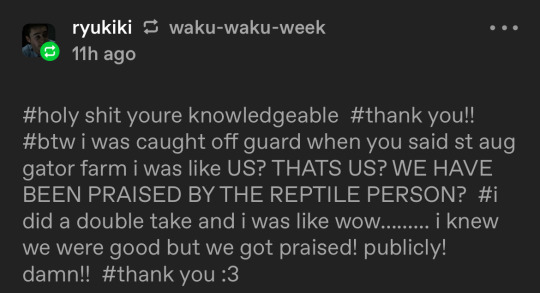
Aug ABSOLUTELY deserves the praise, @ryukikit. St. Augustine Alligator Farm is one of my favorite animal facilities, hands down. It's a pretty zoo, doable in an afternoon if you kinda like crocodilians, or an all day affair if you REALLY like crocodilians. Here are my favorite things about it and why I think it's worth supporting.
1. They keep animals in interesting social groups.

Crocodilians are heavily involved parents, but most places that breed them don't have the enclosure space to let the babies stay with the parents. St. Augustine does. One of my favorite groups was their crèche of slender-snouted crocodiles. They had the parents and then a yearling cohort and a new hatchling cohort. This aligns with how these guys live in the wild- the babies stick around longer! They have the space for it, and they are very in tune with the social needs of their animals.
Very, very few zoos can keep their baby crocs with the adults and still perform maintenance and animal health checks safely. This doesn't mean these facilities are bad- it just means that they have different management practices. And frankly, a lot of these species aren't frequently bred elsewhere. Your average zoo doesn't need a setup where you can have a multiyear crèche for slender-snouted crocodiles. Some species have better success when the young are pulled early, and some zoos are better set up to raise out any offspring separately or behind the scenes. Every facility's practices are different, and this just happens to work well at St. Augustine and be really enjoyable to see as a zoo patron.
Crocodilians are exceptional parents and very protective. It's a sign of incredible animal management practices and animals that feel very comfortable with staff that St. Augustine can do this with nearly every species they breed.
2. They understand the social needs of their animals.
Some crocodilians are social. Some are solitary. Some can live happily with a member of the opposite sex but get territorial around members of the same sex. St. Augustine pays incredible attention to their social groupings to ensure that they aren't just meeting the animals' physical health needs but their social needs as well. They do continuous scientific research about social structures in crocodilians, taking blood samples to test stress hormones and observing stress behaviors to see how group dynamics change.

For example, St. Augustine is home to one of the world's largest known living saltwater crocodiles, Maximo. And his comparatively tiny mate, Sydney. During the educational presentations with these two, they point out that even their monster of a croc needs his social group- he won't eat if she's not around and he is calmer during medical checks if he can see her. These animal share a deep and special pair bond, and they make sure to talk about how the social aspect of these animals' lives is integral to their care. It's a unique aspect of the way they talk about these animals, because he IS a spectacle and he IS a sensation, but they don't talk about him like he's a mindless killing machine- they talk about him like he's a big, complex predator with social needs like any other animal. Aug is the only facility I've been to where the emotional and social needs of crocodilians is part of the education they provide guests- and speaking of education...
3. Their demos and presentations are extremely good.
The presentations at St. Augustine are some of the best I've ever seen, and I've seen literally hundreds of animal talks on everything from aardvarks to zebras. But as you... can probably tell from my blog content, I've spent a lot of time learning about and working with reptiles. I really enjoyed all of their presentations because they are very scientific about things and avoid sensationalism. They really want you to be fascinated by these creatures and love them- but more than anything else, they want you to respect them.
Also, they do a really good job handling their ambassadors. I really enjoyed something as simple as watching an educator tell us about snakes. Throughout the whole presentation she made sure that most of the snake's body was looped in her hand. The snake was always supported and was very calm. She gave the snake plenty of head room so that it didn't feel constricted- it was just good handling all around.

But also, the presentations made it clear how much the park cares about the animals' well-being. When they do the feeding and training presentations, they make it very clear that the animals' participation is entirely voluntary. They do things differently for their 9-foot saltie and their 16-foot saltie, because the 16-footer is so large and heavy he actually struggles walking on land sometimes. They adapt their programs and his care to ensure that he's completely comfortable- and he didn't actually participate in the whole feeding when I was watching! At no point did they try to push him into anything uncomfortable; they offered, he didn't engage, and they moved on. It was a clear expression of his boundaries, and I really appreciated how much his caretakers respected that.
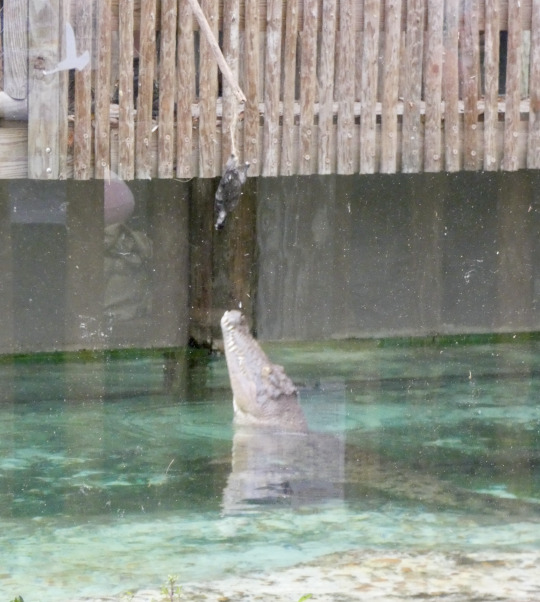
4. Ethical Interactions
I've been to... a lot of tourist locations in Florida that have animals you can hold. Almost always against my will! Many of them are pretty terrible, and you don't actually learn much, if anything. But I really found that to not be the case at St. Augustine. Every single animal presentation and interaction opportunity was accompanied by education about the animal's biology, habits, and- crucially- their conservation status.
When I held a baby alligator at St. Augustine, the proctors- there were two, one to ensure I was holding the gator correctly and the other to educate- were very informative about the role alligators play in their ecosystem and their conservation history. The animals were all properly banded, and one of the two proctors was there to ensure that none of the baby alligators were uncomfortable. As soon as they started getting squirmy or tense, they were removed, unbanded, and taken to an off-exhibit area to relax. And when the babies age out of petting size, they just go in the lagoon to live with others of their species. I saw one upset alligator the entire time I was there, and he was clearly upset that his escape attempt was foiled by a keeper during my nursery tour.
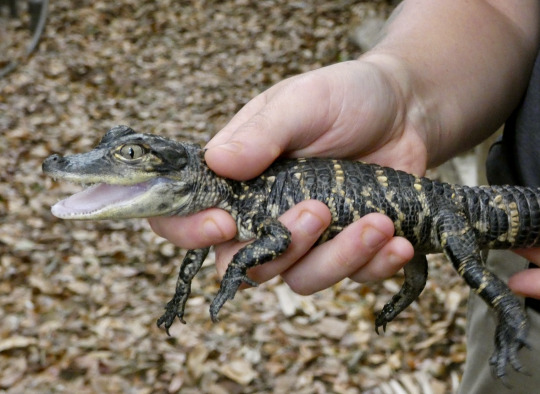
Even though he's restrained in this shot, you can see that his full body and tail are supported, and the grip, while firm, is gentle. He's distressed, but after I took this picture, she put him in his enclosure and he calmed down immediately.
Sometimes when you have petting attractions with baby animals, those animals... don't have a happy ending. (See: cub petting.) But St. Augustine's program is fine- the gators are all aged out of wanting to have mom around, there's no declawing/defanging, and they're handled with care. And it's worth it, because people love what they understand. St. Augustine was integral in raising public awareness about alligators back in the 60s when they were endangered, and now they're thriving- largely in part to programs like St. Augustine getting people to care.
And speaking of getting people to care, let's talk about their research.
5. Shared Research Results
St. Augustine is also home to more species of crocodilian than anywhere else in North America- all of them, usually. (They didn't have a Tomistoma when I visited- that may have changed.)
Because of this species diversity, it's an incredible research resource. Having every species means that you can do a lot of work comparing their behaviors, their growth patterns, and more. They've been a major research site for crocodilian biology since the 1970s. Today, they're one of the key sites for studying crocodilian play and social behaviors. They actually maintain a blog where they post copies of papers that were written using their animals, meaning that you can actually see the results of the research your admission helps fund. You can see that right here: https://www.alligatorfarm.com/conservation-research/research-blog/
All of this adds up to a zoo that provides a unique experience, tons of actual education, and transparency about what its research and conservation steps actually are. St. Augustine's come a long way since its opening in 1893, and they really do want you to leave with a new respect for the animals they care for. Ultimately, if you're a fan of reptiles, you can feel good about visiting the St. Augustine Alligator Farm- their care and keeping are top of the line, they do a ton of innovative conservation research and support for conservation organizations, and you can see this animal there:

(Gharial from the front. Nothing is wrong with her that's just what they look like from the front.)
6K notes
·
View notes
Photo





Stolas, Great Prince of Hell
Andras, Great Marquis of Hell
Duke Agares, Commander of 31 Demon Legions
Abraxas, Ruler of Heretical Basilidians
Caim, Commander of Over 30 Demon Legions
Works by Thiago Lehmann
#art#illustration#digital art#dark art#occult#horror#macabre#mythology#demon#demonology#stolas#andras#agares#abraxas#caim#snake#alligator#wolf#birds#owl
3K notes
·
View notes
